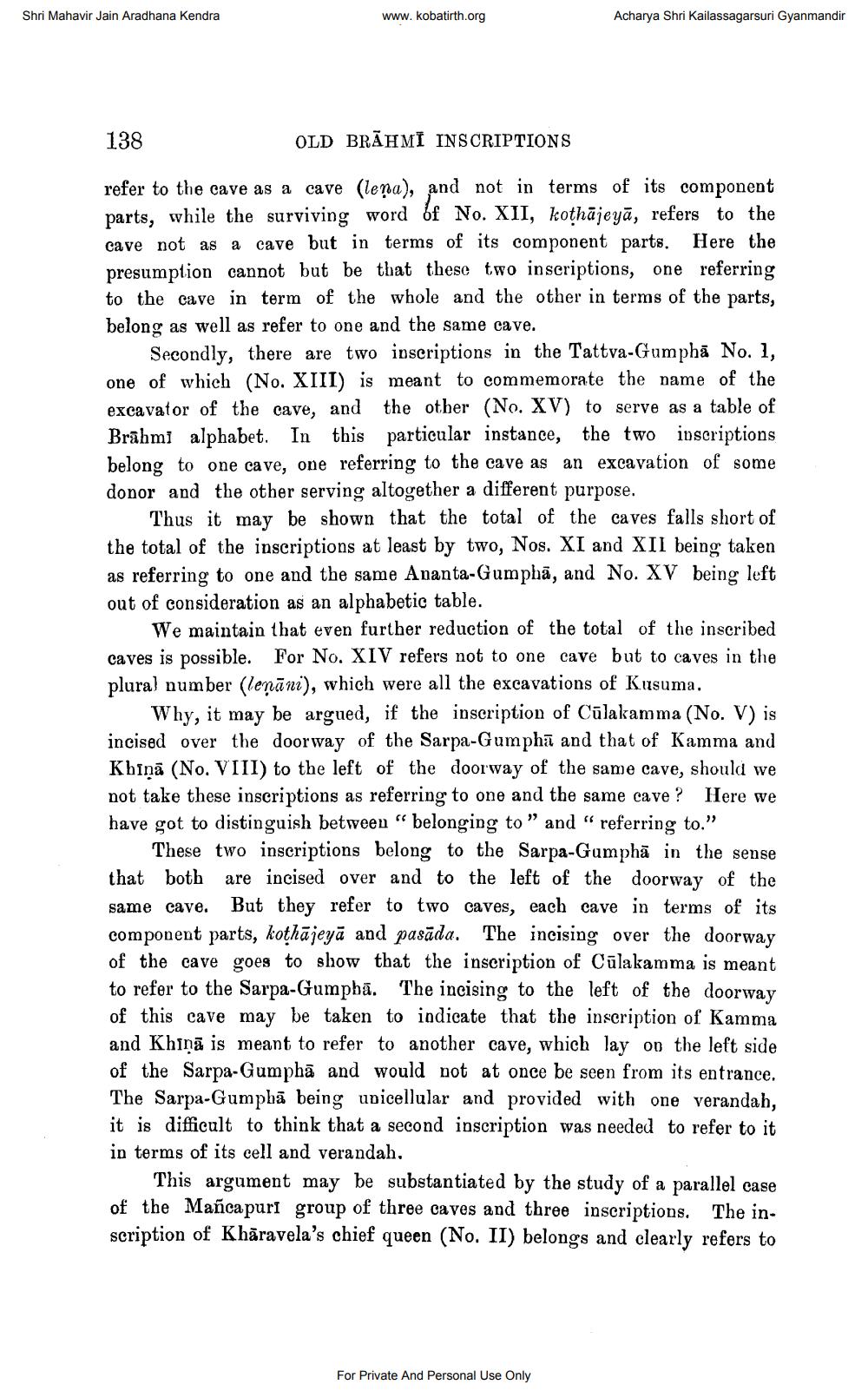________________
Shri Mahavir Jain Aradhana Kendra
www.kobatirth.org
Acharya Shri Kailassagarsuri Gyanmandir
138
OLD BRAHMI INSCRIPTIONS
refer to the cave as a cave (lena), and not in terms of its component parts, while the surviving word of No. XII, koṭhājeya, refers to the cave not as a cave but in terms of its component parts. Here the presumption cannot but be that these two inscriptions, one referring to the cave in term of the whole and the other in terms of the parts, belong as well as refer to one and the same cave.
Secondly, there are two inscriptions in the Tattva-Gumpha No. 1, one of which (No. XIII) is meant to commemorate the name of the excavator of the cave, and the other (No. XV) to serve as a table of Brahmi alphabet. In this particular instance, the two inscriptions. belong to one cave, one referring to the cave as an excavation of some donor and the other serving altogether a different purpose.
Thus it may be shown that the total of the caves falls short of the total of the inscriptions at least by two, Nos. XI and XII being taken as referring to one and the same Ananta-Gumpha, and No. XV being left out of consideration as an alphabetic table.
We maintain that even further reduction of the total of the inscribed caves is possible. For No. XIV refers not to one cave but to caves in the plural number (lenani), which were all the excavations of Kusuma.
Why, it may be argued, if the inscription of Culakamma (No. V) is incised over the doorway of the Sarpa-Gumpha and that of Kamma and Khina (No. VIII) to the left of the doorway of the same cave, should we not take these inscriptions as referring to one and the same cave? Here we have got to distinguish between " belonging to " and "referring to."
same cave.
These two inscriptions belong to the Sarpa-Gumpha in the sense that both are incised over and to the left of the doorway of the But they refer to two caves, each cave in terms of its component parts, koṭhājeyā and pasada. The incising over the doorway of the cave goes to show that the inscription of Culakamma is meant to refer to the Sarpa-Gumpha. The incising to the left of the doorway of this cave may be taken to indicate that the inscription of Kamma and Khina is meant to refer to another cave, which lay on the left side of the Sarpa-Gumpha and would not at once be seen from its entrance. The Sarpa-Gumpha being unicellular and provided with one verandah, it is difficult to think that a second inscription was needed to refer to it in terms of its cell and verandah.
This argument may be substantiated by the study of a parallel case of the Mañcapuri group of three caves and three inscriptions. The inscription of Kharavela's chief queen (No. II) belongs and clearly refers to
For Private And Personal Use Only




